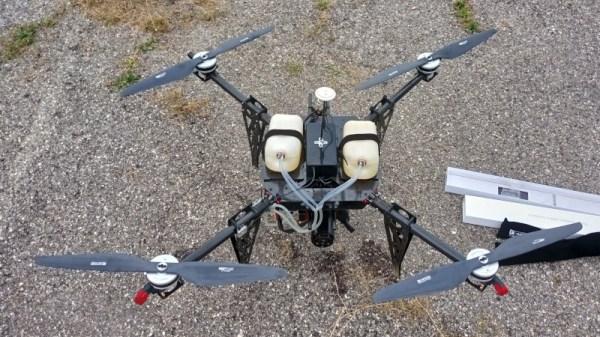Lithium batteries and brushless motors helped make multirotor drones possible, but batteries only last so long. Liquid fuels have far greater energy densities, but have not been widely applied in these roles. [Tech Ingredients] has been experimenting with a compact gasoline-fueled generator, with the aim to extend drone flight times well beyond what is currently possible with batteries (Youtube link, embedded below).
The build began with a single-cylinder, four stroke engine. However, torque spikes and vibration made things difficult. After some iteration, the design settled on employing two single-cylinder two stroke engines, fitted with a timing belt to keep them 180 degrees out of phase. In combination with a pair of balanced flywheels, this keeps vibration to a minimum. Brushless motors are used as generators, combined with rectifier diodes and capacitors to smooth the voltage output. The generator is intended to be used in parallel with a lithium battery pack in order to ensure the drone always has power available, even in the event of a temporary malfunction.
This is a build with plenty of promise, and we can’t wait to see what kind of flight time can be achieved once the system is finished and flight ready. We’ve seen others experimenting with hybrid drones, too.
Continue reading “Designing Compact Gasoline Generator Prototype For Drone Use”












